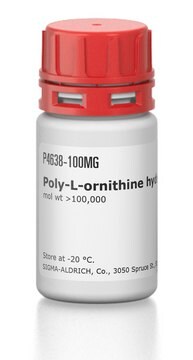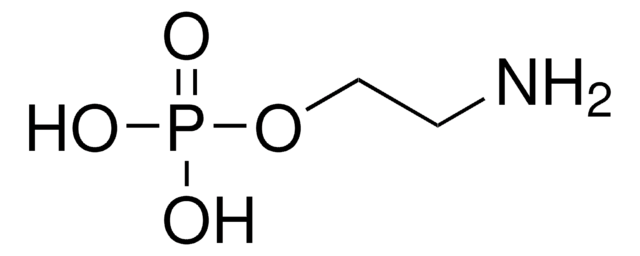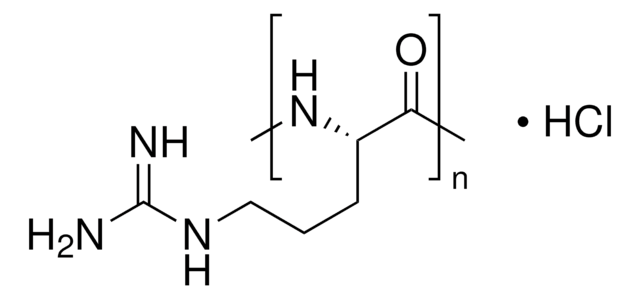P4538
Poly-L-ornithine hydrobromide
suitable for cell culture, Mol wt 5,000-15,000
Synonym(s):
L-Ornithine homopolymer hydrobromide
About This Item
Recommended Products
product name
Poly-L-ornithine hydrobromide, mol wt 5,000-15,000
form
powder
Quality Level
mol wt
5,000-15,000
technique(s)
cell culture | mammalian: suitable
color
white to off-white
storage temp.
−20°C
InChI
1S/C5H12N2O2.BrH/c6-3-1-2-4(7)5(8)9;/h4H,1-3,6-7H2,(H,8,9);1H
InChI key
GWRQMKDBBHFVIZ-UHFFFAOYSA-N
Looking for similar products? Visit Product Comparison Guide
Application
- Thermodynamic Characterization of Polypeptide Complex Coacervation.: The research investigates the thermodynamic properties of polypeptide complex coacervation, including the role of Poly-L-ornithine hydrobromide in these interactions. This study provides insights into the self-assembly processes of polypeptides, which are crucial for designing new biomaterials (Priftis et al., 2012).
Analysis Note
Other Notes
Storage Class Code
11 - Combustible Solids
WGK
WGK 3
Flash Point(F)
Not applicable
Flash Point(C)
Not applicable
Personal Protective Equipment
Certificates of Analysis (COA)
Search for Certificates of Analysis (COA) by entering the products Lot/Batch Number. Lot and Batch Numbers can be found on a product’s label following the words ‘Lot’ or ‘Batch’.
Already Own This Product?
Find documentation for the products that you have recently purchased in the Document Library.
Articles
Humankind has utilized protein materials throughout its existence, starting with the use of materials such as wool and silk for warmth and protection from the elements and continuing with the use of recombinant DNA techniques to synthesize proteins with unique and useful properties.
Our team of scientists has experience in all areas of research including Life Science, Material Science, Chemical Synthesis, Chromatography, Analytical and many others.
Contact Technical Service







